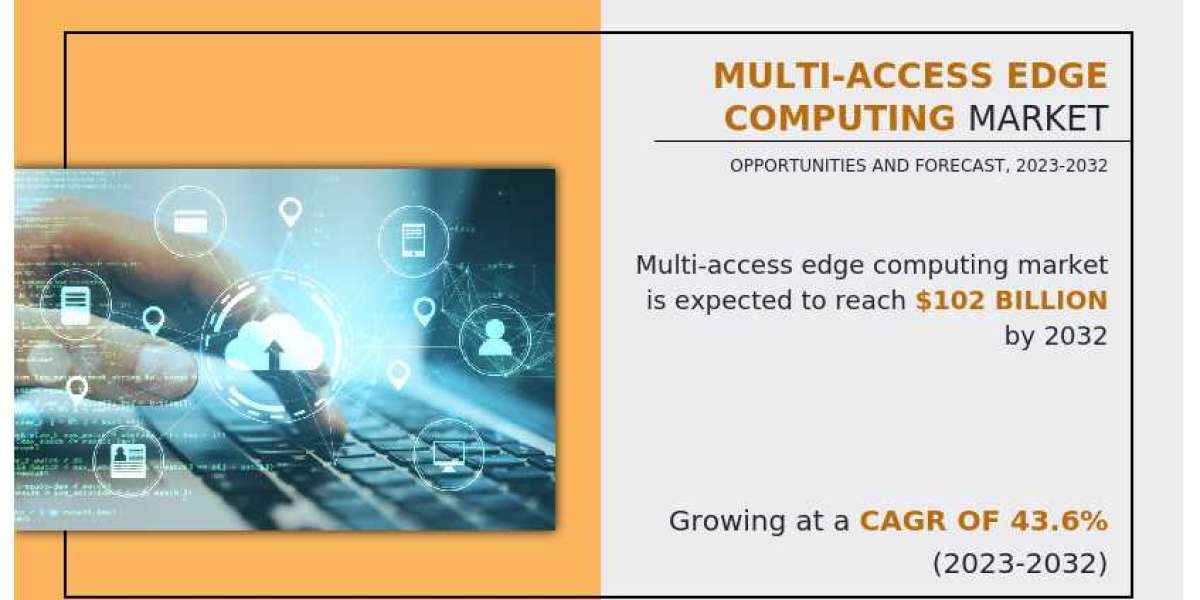The global Multi-Access Edge Computing Marketwas valued at $2.8 billion in 2022, and is projected to reach $102 billion by 2032, growing at a CAGR of 43.6% from 2023 to 2032. Multi-Access Edge Computing (MEC) is a rapidly evolving and disruptive technological market whose goal is to move networking, storage, and processing power closer to the network edge. MEC creates a distributed computing environment by enabling real-time, low-latency data processing and services. The convergence of cloud computing and telecommunications technologies to enable quicker and more effective data processing at network edges defines this sector. As a revolutionary change in data processing and service delivery, MEC is a vital market for facilitating the subsequent wave of digital transformation in various industries. It provides new options for enterprises and technology providers while bringing processing power closer to the point of demand, enabling a wide range of real-time, low-latency, and data-intensive applications.
Request Sample Pages: https://www.alliedmarketresearch.com/request-sample/A06954
Surge in 5G network rollout drive the market growth. In addition, rise in adoption of IoT primarily drive the growth of the market. However, infrastructure costs and deployment challenges and concerns about security and privacy are primarily is expected to hamper the growth of the market. Furthermore, industry 4.0 and smart manufacturing is expected to create lucrative growth opportunities for the market.
By component, the software segment held the major share in 2022, garnering nearly half of the global multi-access edge computing market revenue, owing to the effective use of edge computing resources, improves application performance, and helps in providing end users with high-bandwidth, low-latency services propels the market growth significantly. The services segment would also showcase the fastest CAGR of 46.0% during the forecast period, owing to improve operational efficiency, develop all new applications, and provide end consumers with quicker, more customized services in a variety of industries, such as manufacturing, transportation, telecommunications, and healthcare.
Inquiry Before Buying: https://www.alliedmarketresearch.com/purchase-enquiry/A06954
On the basis of end user, IT and telecom segment dominated the multi-access edge computing market in 2022 and is expected to maintain its dominance in the upcoming years owing to offer an economical and effective means of establishing connections and developing engagement with a wide-ranging audience propels the market growth significantly. However, the automotive segment is expected to witness the highest growth, owing the growing deployment of autonomous driving technology and the integration of cutting-edge technologies like machine learning and artificial intelligence (AI) are significant advancements.
By region, North America garnered the highest share in 2022, holding more than one-third of the global multi-access edge computing market revenue in 2022, and is projected to retain its dominance by 2032, owing to the growing need for applications requiring extremely low latency and real-time data processing is crucial for sectors like autonomous vehicles, smart cities, and augmented reality (AR)/virtual reality (VR) aiding the growth of the multi-access edge computing market. The Asia-Pacific region would also portray the fastest CAGR of 48.0% during the forecast period, owing to the growing use of 5G technology as well as the rapid growth of IoT devices and applications which is expected to fuel the market growth in Asia-Pacific.
Leading Market Players:
- Hewlett Packard Enterprise Development LP
- Juniper Networks, Inc.
- Huawei Technologies Co., Ltd.
- Adlink Technology Inc.
- IBM
- Intel Corporation
- Advantech Co., Ltd.
- Vapor Io.
- Nokia
- Saguna
The report analyzes these key players in the global multi-access edge computing market. These players have adopted various strategies such as expansion, new product launches, partnerships, and others to increase their market penetration and strengthen their position in the industry. The report is helpful in determining the business performance, operating segments, developments, and product portfolios of every market player.














